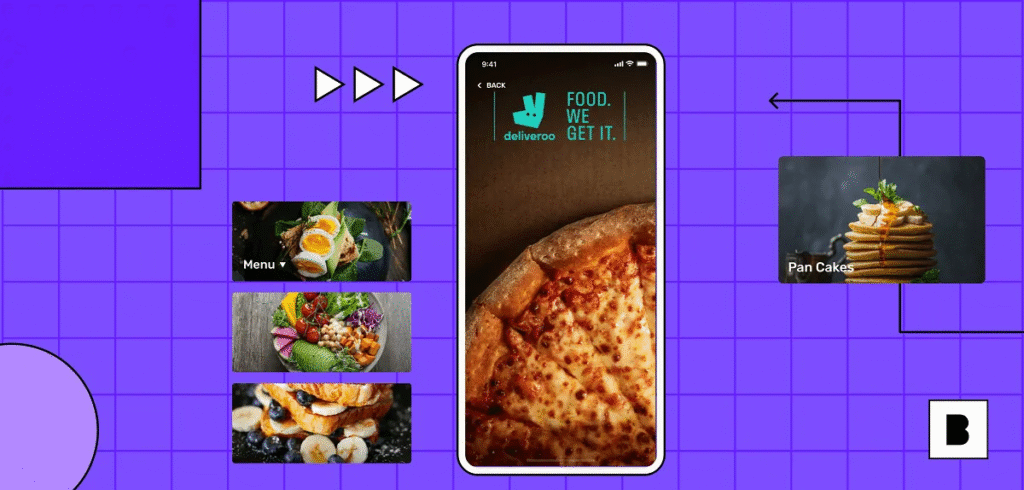Modern dining is no longer just about food — it’s also about the experience. For cafés and restaurants, offering a digital menu isn’t just a convenience; it’s becoming a basic customer expectation. Just like the Best reasons to play on a mobile casino include flexibility, speed, and mobile accessibility, the same logic applies to restaurants using tech to upgrade their service. Digital menus are not only sleek and easy to update, but they also support contactless interactions, reduce printing costs, and offer more interactive options.
Why Digital Menus Are on the Rise
The shift toward digital menus has been accelerated by changes in consumer behavior and health standards. Customers are more comfortable scanning a QR code at the table and browsing the menu on their phone than touching printed pages passed around all day. It’s faster, cleaner, and more convenient.
From a business perspective, digital menus offer incredible flexibility. You can change prices, update photos, remove out-of-stock items, or add daily specials without needing to reprint anything. Many digital menu apps even allow instant syncing across all your locations, which is perfect for franchises or growing café chains.
Top Digital Menu Apps Worth Considering
Several mobile apps and web-based platforms are designed to help restaurant owners create professional digital menus without hiring a designer or developer. These apps usually include templates, drag-and-drop editors, photo galleries, pricing tools, and QR code generators.
One of the most popular solutions is Menu Tiger, which allows you to create multilingual menus, track analytics, and connect menus to individual tables for easier ordering. It’s cloud-based and doesn’t require any technical knowledge.
Another strong option is GloriaFood, which offers free digital menu tools along with ordering integration. This can be especially useful for smaller cafés that want to take orders for pickup or delivery directly from the digital menu.
Menury is a newer app that focuses on design and user interface. It lets you present your food and drinks in an appealing way with photos, descriptions, allergen info, and customizable styling. The interface is intuitive, and the setup process is quick — ideal for places that need to get up and running fast.
These tools are also mobile-first, meaning you can manage your menus directly from your smartphone — which fits perfectly into the busy routine of any food service business.
How One Local Café Made the Switch
I spoke to a café owner who recently switched from traditional paper menus to a fully digital version using a QR code and an app. At first, they were skeptical — worried that some customers might not like the change. But within a week, they noticed customers not only adapted quickly but even appreciated the experience more. Guests could see photos of each item, customize their orders easily, and give instant feedback. The café staff also saved time by not explaining each menu item repeatedly — the digital layout did most of the work.
Customization and Control
One major benefit of digital menus is how much control they offer. Unlike static printed versions, a digital menu can be updated as often as needed — by season, by availability, or by event. If you run out of a dish, just remove it. Want to try a new item for a weekend special? Add it with a photo and a short description, and you’re done.
Many apps also include inventory tracking or POS integration, giving you deeper insight into what’s selling well and what isn’t. That data can help you adjust your offerings in real time and make smarter decisions based on customer behavior.
Why It’s Worth It for Even Small Cafés
Some smaller cafés worry that going digital might be too technical or expensive. But most digital menu platforms offer free tiers or low monthly rates. Many include QR code creation, support for multiple languages, and basic analytics even in their free plans. If you already have a smartphone or tablet, you’re halfway there.
And when you consider how much you might spend reprinting menus or how much time is lost in daily manual updates, the cost of a digital menu system becomes very reasonable.
Connection to the Mobile Experience
In the same way people enjoy gaming on the go and appreciate the mobile casino, restaurant customers value digital experiences that are quick, interactive, and always accessible. When someone visits your café and finds a well-organized, mobile-friendly menu that responds instantly — it sets the tone for the whole experience.
Digital menus also allow for visual storytelling: high-quality images, featured items, chef’s notes, or wine pairings — all from a screen they’re already comfortable with.
Security and Simplicity
There’s also the benefit of hygiene and safety. Digital menus reduce shared contact surfaces, something that became especially important in recent years. They also remove the need for customers to ask staff questions about ingredients or pricing, as that information is presented clearly.
Finally, digital menus can be hosted on your own domain or integrated into your website, adding SEO benefits and helping your café show up better in local search results.
Final Thoughts
Creating a digital menu is no longer something only big restaurant chains can afford. Thanks to user-friendly apps and affordable plans, any café or restaurant can offer a clean, efficient, and modern menu experience that improves service and cuts down on waste.
Digital tools are changing how we eat, order, and interact with restaurants. And just like in gaming — where the mobile casino include speed, flexibility, and control — customers now expect those same qualities from the places where they dine. A great menu is no longer just about what’s on it, but how it’s delivered.





